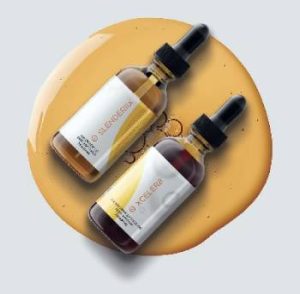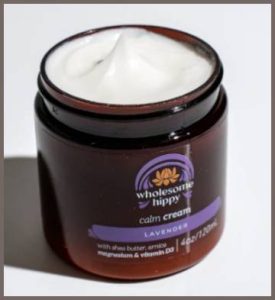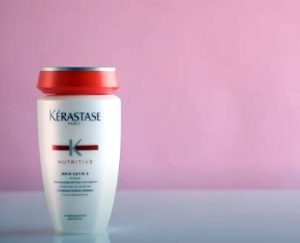I’m not one to throw around skincare hype lightly, but the Mediheal Phyto-Enzyme Peeling Pad deserves a spot in your routine. These pads are a game-changer—gentle exfoliation, pore-tightening magic, and hydration that leaves your skin glowing. Whether you’re battling blackheads or chasing that smooth, radiant look, they deliver without the harsh sting of other exfoliants. Trust me, after a few uses, you’ll wonder how you lived without them. Let’s talk about my experience, the pros and cons, and how they stack up against the competition.
My Journey with the Mediheal Phyto-Enzyme Peeling Pad
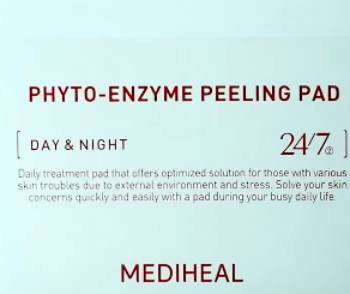
Picture this: my skin was in a rut. I’m talking texture that felt like sandpaper, stubborn blackheads camping out on my nose, and pores that seemed to scream for attention. I’d tried scrubs, acids, and even those trendy cleansing oils, but nothing clicked. Then I stumbled across the Mediheal Phyto-Enzyme Peeling Pad, and let me tell you, it was like my skin sighed in relief. These pads, soaked in papaya enzyme and lipohydroxy acid (LHA), promised gentle exfoliation and pore refinement. I was skeptical but desperate, so I gave them a shot.
The first time I swiped one across my face, I noticed the dual-sided texture—one side embossed for a deeper exfoliation, the other smooth for sensitive areas. It felt sturdy, not like those flimsy cotton pads that fall apart. The essence wasn’t sticky, which was a win, and it absorbed quickly. After a week of using it every other night, my skin felt softer, and those pesky blackheads were less noticeable. By week two, my pores looked tighter, and the texture on my cheeks? Almost gone. I even used it as a mini-mask on my T-zone for 15 minutes, and the glow afterward was unreal. The herbal scent was a bit strong at first, but I got used to it. Honestly, this pad became my skin’s new best friend, fitting seamlessly into my routine without irritation.
What Makes These Pads So Special?
The Mediheal Phyto-Enzyme Peeling Pad isn’t just another skincare gimmick. It’s a thoughtfully designed product that balances exfoliation with hydration. The star players—papaya enzyme and LHA—work together to slough off dead skin cells and unclog pores without stripping your skin. Papaya enzyme, a natural exfoliant, dissolves the gunk that clogs your pores, while LHA, a gentler cousin of salicylic acid, targets surface-level impurities. The result? Smoother skin that doesn’t feel raw. Plus, the pads are infused with plant extracts like beta-glucan and essential oils to soothe and nourish, making them a solid pick for most skin types.
What sets these pads apart is their versatility. You can swipe them across your face post-cleanse for daily maintenance or leave them on as a treatment mask for a deeper exfoliation session. The embossed fabric adds a physical exfoliation element, but it’s gentle enough that I never felt like I was sanding my face off. And let’s talk about the hydration—it’s not just about peeling; these pads leave your skin plump and prepped for the rest of your routine.
How to Keep Your Pads Working Their Magic?
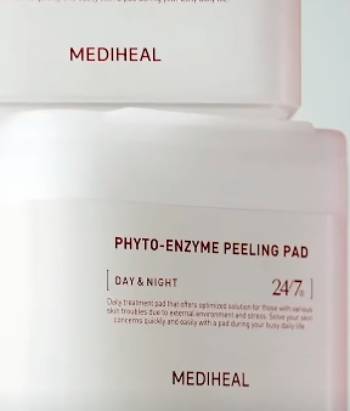
- Patch Test First: Before you go all-in, swipe a pad on a small area, like your inner arm, to check for reactions. I learned this the hard way with another exfoliant that left my skin red. Better safe than sorry, especially if your skin’s on the sensitive side.
- Start Slow: Don’t be like me and use these every day right off the bat. Start with two to three times a week to see how your skin responds. I noticed better results when I eased into it, letting my skin adjust to the exfoliation.
- Use at Night: I prefer using these pads at night after cleansing. Exfoliation can make your skin more sensitive to the sun, so nighttime is ideal. Plus, it preps your skin for serums and moisturizers to sink in better.
- Store Properly: Keep the jar tightly sealed and store it in a cool, dry place. I made the mistake of leaving mine in a steamy bathroom, and the pads dried out slightly. A quick fix is to flip the jar upside down occasionally to redistribute the essence.
- Follow with Hydration: Post-pad, layer on a hydrating serum or moisturizer. I love pairing these with a lightweight gel cream to lock in the moisture. It amplifies the glow and keeps my skin from feeling tight.
Pros and Cons of the Mediheal Phyto-Enzyme Peeling Pad
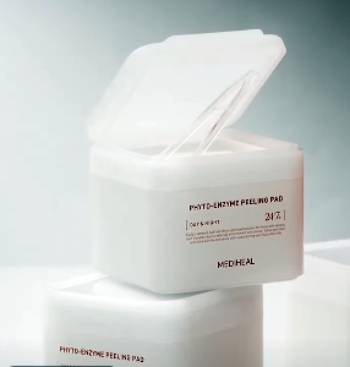
Pros:
- Gentle Yet Effective Exfoliation: These pads strike a perfect balance. The papaya enzyme and LHA combo exfoliates without the redness or stinging I’ve experienced with harsher acids. After a few uses, my skin felt smoother, and my blackheads were noticeably reduced. It’s like a mini spa treatment at home.
- Pore-Tightening Power: If you’re self-conscious about visible pores, these pads are a lifesaver. I saw a difference in my nose and cheek pores within two weeks. They looked smaller, and my skin had a refined, polished look that made foundation glide on better.
- Hydration That Doesn’t Feel Heavy: Unlike some exfoliating products that leave your skin parched, these pads hydrate as they work. The water essence formula sinks in fast, leaving my skin soft and plump without a greasy residue. It’s a godsend for my combo skin.
- Dual-Sided Design: The embossed side tackles rough patches, while the smooth side is perfect for sensitive areas like my cheeks. This versatility means I can customize the intensity based on how my skin’s feeling, which is a huge plus.
- Vegan and Plant-Based: I love that these pads are vegan and packed with natural ingredients like papaya enzyme and beta-glucan. It feels good knowing I’m using something that’s kind to my skin and the planet.
Cons:
- Strong Herbal Scent: The herbal fragrance, while natural, can be overwhelming. I found it off-putting at first, especially since I prefer unscented products. It doesn’t linger, but if you’re sensitive to smells, it might take some getting used to.
- Not Ideal for Super Sensitive Skin: While these pads are gentle compared to other exfoliants, they still caused a slight tingle on my most sensitive days. If your skin barrier is compromised, you might need to patch-test or use them less frequently.
- Pricey for Daily Use: At around $30 for 90 pads, they’re not the cheapest option. If you’re using them daily, the cost adds up. I wish Mediheal offered a smaller, budget-friendly pack for testing before committing to the full jar.
- Limited Acne Control: These pads helped with my minor acne, but they’re not a miracle cure for severe breakouts. If acne is your main concern, you might need something stronger, like a salicylic acid treatment, alongside these.
Mediheal Phyto-Enzyme Peeling Pad Vs. Other Brands
- Mediheal Phyto-Enzyme Peeling Pad Vs. Anua Heartleaf Pore Control Pads
Anua’s Heartleaf Pore Control Pads are a favorite for oily skin, thanks to their heartleaf extract, which soothes and controls sebum. They’re hydrating and gentle, but I found them less effective at tackling texture compared to Mediheal. Anua’s pads lack the dual-sided texture, so the exfoliation feels one-dimensional. They’re also pricier per pad, and the lack of a refill option bugged me. Mediheal’s papaya enzyme and LHA give it an edge for pore refinement, though Anua’s lighter scent might appeal if you’re sensitive to fragrances. For overall results, Mediheal wins.
- Mediheal Phyto-Enzyme Peeling Pad Vs. COSRX One Step Original Clear Pad
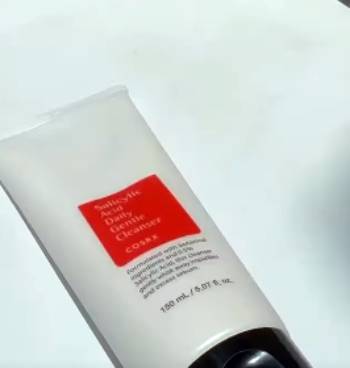
COSRX’s One Step Original Clear Pads are a cult classic, packed with betaine salicylate for acne-prone skin. They’re great for oil control but felt harsher on my skin than Mediheal’s gentler LHA formula.
COSRX lacks the hydrating punch Mediheal delivers, leaving my skin a bit dry. The pads are thinner, too, which makes them less luxurious. While COSRX excels for breakouts, Mediheal’s versatility and texture improvement make it my go-to.
If acne’s your main issue, COSRX might edge out, but for all-around glow, Mediheal’s the champ.
- Mediheal Phyto-Enzyme Peeling Pad Vs. Neogen Dermalogy Bio-Peel Gauze Peeling Lemon
Neogen’s Bio-Peel Gauze Peeling Lemon pads are a physical exfoliation powerhouse with a citrusy kick. They’re effective for sloughing off dead skin but felt too abrasive for my sensitive days. Mediheal’s LHA and papaya enzyme offer a milder approach, which I prefer for daily use. Neogen’s pads are also messier, with a wetter formula that drips. While Neogen’s brightening claims are solid, Mediheal’s pore-tightening and hydration benefits outshine them. If you love a zesty scent and intense exfoliation, Neogen’s great; otherwise, Mediheal’s gentler vibe wins.
- Mediheal Phyto-Enzyme Peeling Pad Vs. Dr. Dennis Gross Alpha Beta Universal Daily Peel
Dr. Dennis Gross’s Alpha Beta Universal Daily Peel is a premium option with a two-step process—exfoliation followed by neutralization. It’s packed with AHAs and BHAs, delivering dramatic results for texture and tone. However, it’s significantly pricier than Mediheal and can be too intense for sensitive skin. Mediheal’s single-step pad is more convenient and gentler, though it’s less potent for deep exfoliation. If budget isn’t a concern and you want spa-level results, Dr. Dennis Gross is tempting. For everyday use and value, Mediheal’s my pick.
- Mediheal Phyto-Enzyme Peeling Pad Vs. Needly Daily Toner Pad
Needly’s Daily Toner Pads focus on hydration with panthenol and green tea extract, making them soothing for sensitive skin. They’re less about exfoliation and more about calming, which didn’t address my texture issues as effectively as Mediheal. Needly’s pads are softer but flimsier, and the essence feels lighter. Mediheal’s dual-sided design and LHA-driven exfoliation give it a clear edge for pore refinement and smoothness. If your skin’s reactive and you prioritize comfort over exfoliation, Needly’s a solid choice. For transformative results, Mediheal’s the one to beat.
Also Read: My Thoughts On Mediheal Toner Pads
Frequently Asked Questions (FAQs)
It depends on your skin’s tolerance. I started with two to three times a week, which worked well for my combo skin. If your skin’s less sensitive, daily use is fine, but always monitor for irritation. Sensitive skin types might stick to once or twice weekly.
Enzyme peeling, like with Mediheal’s papaya enzyme, is fantastic for gentle exfoliation. It dissolves dead skin without the harshness of acids or scrubs, making it ideal for most skin types. I love how it smooths my skin without redness, but it’s not a one-size-fits-all fix for severe acne.
Yes, but proceed with caution. I use these pads in the morning and retinol at night to avoid irritation. If you want to use them together, start with alternate days to see how your skin reacts. Always follow with a moisturizer to support your skin barrier.
Peeling pads like Mediheal’s can be used two to seven times a week, depending on your skin. I found three times weekly was my sweet spot for noticeable results without overdoing it. Sensitive skin might need less frequent use, while oilier types can handle more.
Final Thoughts
I can’t sing the praises of the Mediheal Phyto-Enzyme Peeling Pad enough. They’ve transformed my skin from textured and pore-heavy to smooth and radiant. The gentle exfoliation, hydration, and pore-tightening benefits make them a staple I won’t ditch. Whether you’re a skincare newbie or a seasoned pro, these pads deliver results without the fuss. Grab a jar, and I promise your skin will thank you.

